Kansas City’s walls tell stories because José Faus put them there. The mural artist grew up near the stockyards where the smell was a constant reminder of the city’s industrial roots, as was the chug and rattle of freight trains. Those early impressions of railroads, warehouses, and stockyards are reflected throughout his murals and bring attention to places many drive past without seeing.
Long before his first mural, José was adapting to life in a new country. He was born in Bogotá, Colombia, and moved to Kansas City at the age of eight. The transition required an adjustment. “The language is different, the food is different, and the customs are different,” he said.
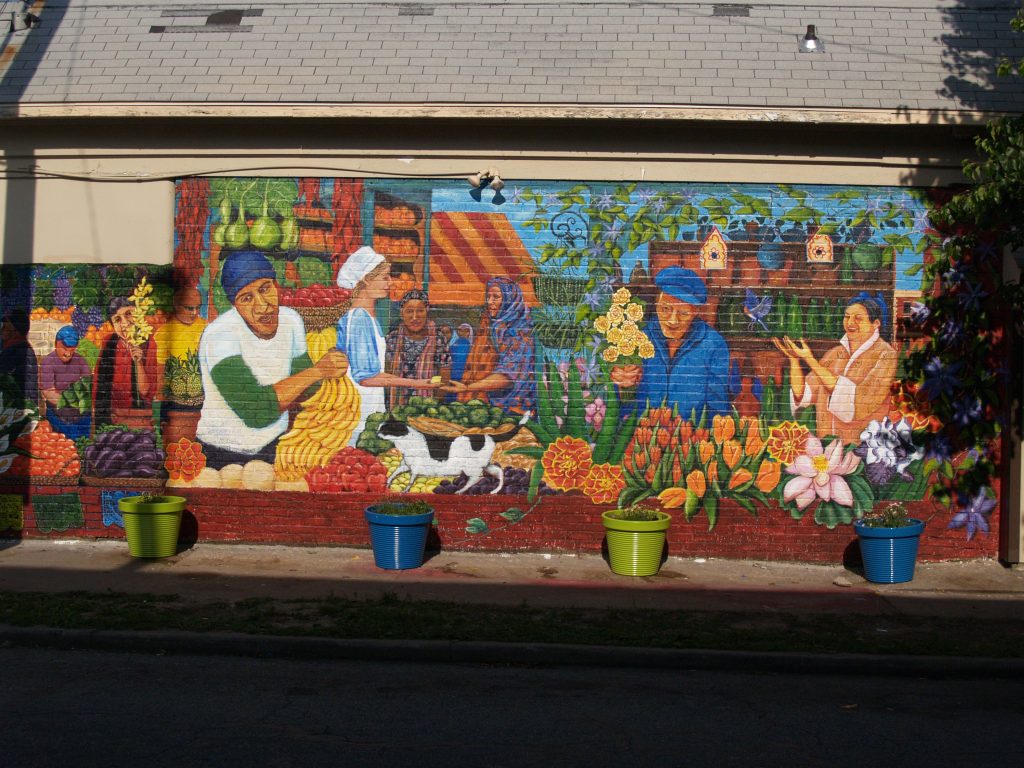
Even as he learned English, his identity as a Colombian immigrant stood out. “I was that exotic thing, someone very interesting at school,” he said. “I remember the friendships I was making were met by curiosity. People said, ‘You’re from another country. You speak a different language.’ It was always like, what is this called? What is that called?”
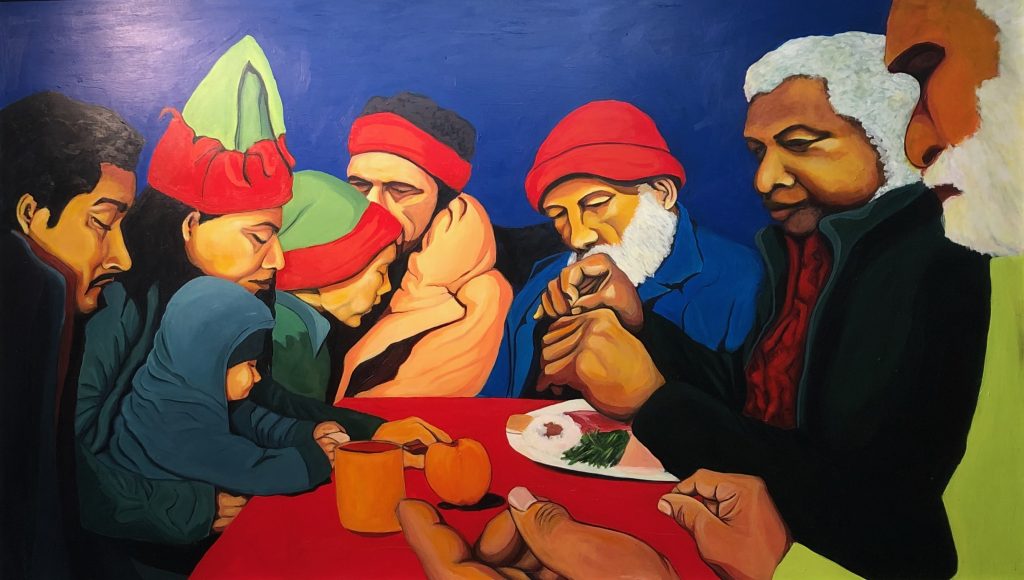
Though he is now an established artist, José didn’t begin his career with that goal. He studied political science in college. It was a taxing course load that weighed on him. His brother intervened and encouraged him to visit a drawing class at Johnson County Community College. “He noticed how stressed I was because I was taking 21 hours that semester,” José said. “He told me there was a teacher who had a drawing class. He had told her about me and she said I was welcome to come in.”
When José arrived, the instructor was skeptical. “There was a nude model when I walked in, so before I could even explain anything, she was giving me the side eye,” he said. “She gave me a big piece of paper and told me to draw at the front of the room.” After sketching for 20 minutes, she tapped on his shoulder and said he was welcome to come to her class anytime. That invitation marked the beginning of his formal art education. Within a week, he changed his major and began pursuing studio art full time.
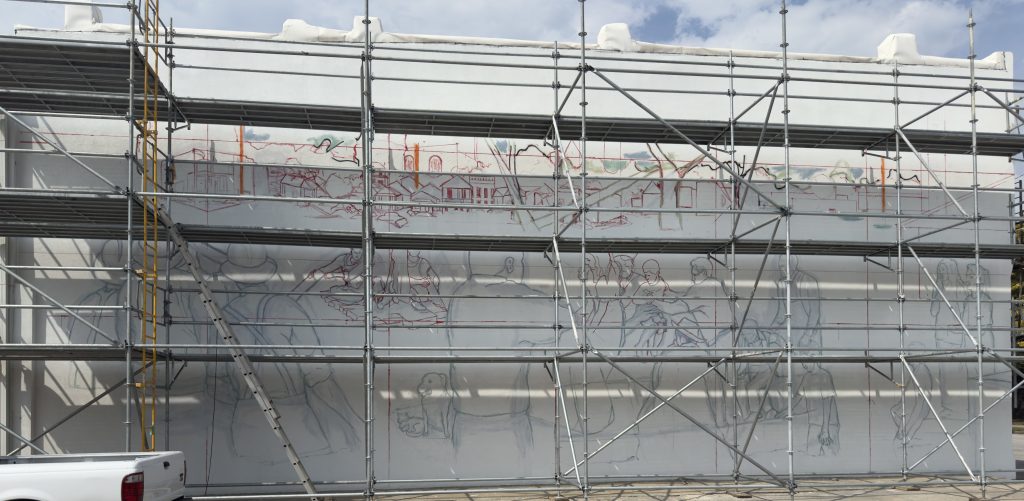
With those defining years behind him, José’s path led him to create murals across Kansas City that often focus on overlooked communities. “Usually it is marginalized communities or communities that have been neglected or dismissed,” he said. One of his earliest and most recognized works is the Anthology of Argentine mural, which José painted in collaboration with other artists. It stretches across a two-block, 220-foot wall along Metropolitan Avenue in the Argentine neighborhood. The mural traces local history from Indigenous roots through industrialization, and immigrant labor.
Another mural of note is the Lewis & Clark Expedition 1804, painted in collaboration with other artists in 2004. It covers the side of a building at 5th and Wyandotte Streets, and illustrates the history of westward expansion. In addition, José has painted several large-scale works in Kansas City’s Northeast neighborhood.
His murals challenge Kansas City’s tendency to disregard older areas of town and invest in only the polished spaces that attract tourists. By painting rail yards, immigrant neighborhoods, and industrial corridors, José has captured the stories of Kansas City’s roots. “There was this sense that we were a cow town, kind of a backwater flyover,” he said. “This was an agricultural center, a railhead, and a major industrial hub, but I realized we run away from a lot of those things. It’s kind of like we’re embarrassed.”
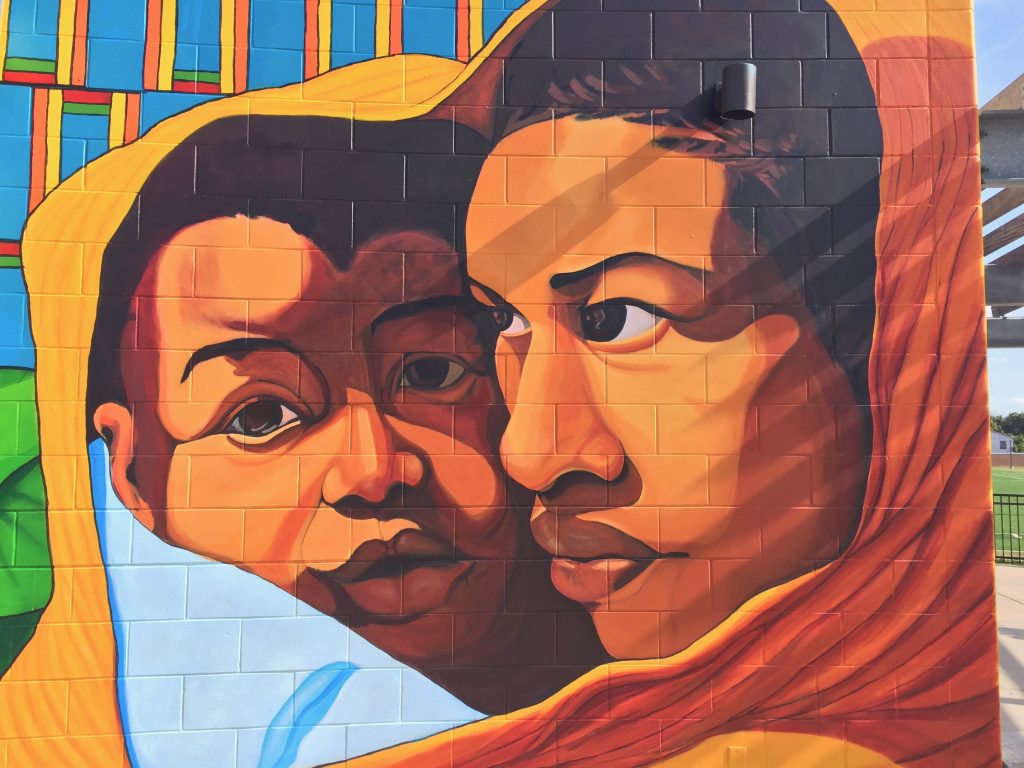
Outside of his mural work, José finds satisfaction in paying forward the helping hands previously extended to him. “People help you, and you help them in honor of what others have done for you,” he said. “If I can help somebody, I’ll do it.” He mentors informally by meeting with emerging artists over coffee or at community events. He also works with Artist INC, a Kansas City program dedicated to artist entrepreneur training.
In addition to visual art, José is a writer and a poet. He cofounded the Latino Writers Collective to support those who were underrepresented in the local literary scene. The now inactive non profit helped its Latino members take their writing career beyond a hobby. “We didn’t see many who looked like us when we went to literary readings, so that was the impetus for the Latino Writers Collective, to find like-minded people and then start presenting as poets and as writers,” he said.
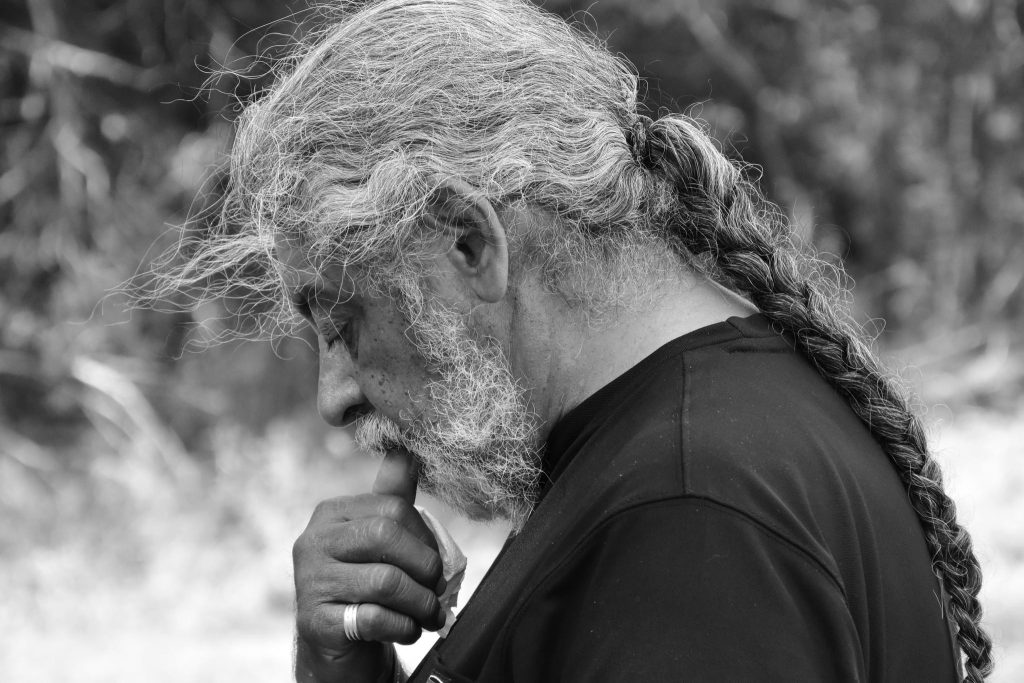
The group held meetings at The Writers Place to share work and hone their performance skills. “We became very conscious about reading,” José said. “It’s a very different thing than just reading a book, so we cultivated the way the Latino Writers Collective presented their works.” Over time, the group published three anthologies, including a Spanish-language collection.
The end of the Collective didn’t slow him down. His energy is now directed toward new projects and mentorship. While he doesn’t spend much time thinking about legacy in the traditional sense, his focus is on inspiring others. This means continuing to mentor artists and telling stories on Kansas City’s walls through his murals. “There is a vibrancy and a hum in the city,” he said. His work ensures that vibrancy is not forgotten.
Featured in the October 4, 2025 issue of The Independent
By: Monica V. Reynolds
Photo Credit: Kevin Rabbas